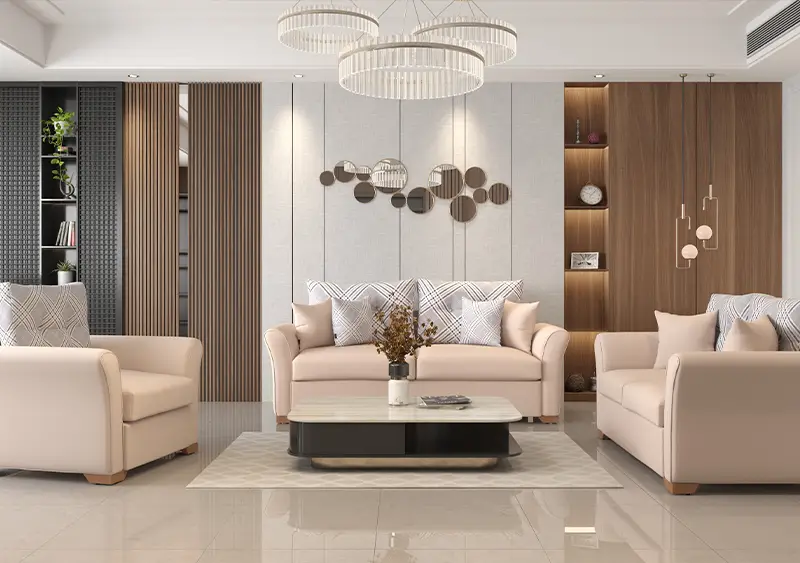9 Essential Types of Lifestyle 3D Product Rendering Images for E-Commerce Success
Boost e-commerce sales with high-impact 3D product rendering images!

5 MIN READ
March 24, 2025

Written By
Sasikumar Janakiraman
A great product isn’t enough to win attention in the crowded e-commerce world. What really drives clicks, engagement, and conversions is how that product is presented. Customers don’t just want to see an item, they want to imagine it in their life.
Lifestyle 3D product rendering helps brands make that vision real. Instead of relying on expensive photo shoots or stock backdrops, companies can now create high-quality, realistic scenes that show their product in context. These images tell a story, spark emotion, and bring the shopping experience closer to reality.
In this blog, we’ll explore the nine most impactful types of lifestyle 3D images and how each one helps e-commerce brands stand out, build trust, and sell more. Let’s take a closer look.
9 Must-Have 3D Product Rendering Styles for E-Commerce Brands
Your product may be great, but if it doesn’t look great online, it won’t sell. The right 3D product rendering styles can transform how customers see, feel, and connect with your product. Here are nine essential visuals every e-commerce brand should use to stand out and sell more.
1. Colorway Lifestyle Images
Customers love options, but showing multiple color variations with traditional photography can be time-consuming and costly. With 3D rendering services, furniture or fashion brands can present each colorway in a realistic lifestyle setting—without setting up a new scene every time.
For example, a sofa can be digitally rendered in six fabric choices, each placed in a different interior setup to match tone and mood. This approach makes it easy for buyers to envision how each version fits their space and style, increasing both emotional connection and purchase intent.
2. Product-Only Images on Neutral Backgrounds
Sometimes simplicity is key. Neutral background renders—often white, gray, or softly shaded—strip away distractions so the product takes center stage.
This style is essential for product listing pages, online catalogs, and comparison charts. It gives customers a clean, clear, and focused view of the item, which is especially useful for technical or high-design products where form and silhouette matter.
Brands like Apple and Dyson frequently use this approach to emphasize clean design and clarity.
3. Close-Up Detail Shots
Details matter, especially online where customers can’t touch or feel the product. Close-up renders zoom in on textures, stitching, surface materials, or any unique element that reflects quality and craftsmanship.
Whether it’s the grain of a wooden dining table, the weave of a fabric, or the zipper on a backpack, these images build trust by showing that nothing is hidden.
When used strategically alongside lifestyle and wide-angle shots, they help customers make more informed and confident decisions.
4. 360-Degree Interactive Views
Today’s buyers expect control. A 360-degree product viewer lets users rotate and inspect every angle, just as they would in a showroom.
This level of interactivity isn’t just impressive—it reduces friction in the buying process. Customers can examine hidden sides, look under the base, or zoom in on specific features. For items with form-driven design like shoes, electronics, or furniture, this feature adds clarity and boosts confidence.
It also increases time on site, which often correlates with higher conversion rates.
5. In-Context or Roomset Images
Selling a product is easier when customers can see it in use. In-context or roomset renders place the product within a fully designed space—like a coffee table styled in a living room, or a lamp on a nightstand.
This type of imagery answers questions about scale, fit, and style compatibility. It also sparks inspiration and helps customers picture how the product might work in their own homes.
The best part? These scenes can be digitally built and reused, reducing long-term marketing costs.
6. Augmented Reality (AR) Integration
AR turns static browsing into immersive decision-making. With AR-ready 3D models, shoppers can use their phones or tablets to place the product in their real environment.
This is a game changer for furniture, decor, or large-scale items where size and layout are critical. It minimizes doubts like “Will this fit?” or “Does it clash with my existing style?”
Major retailers like IKEA and Target are using AR not as a gimmick but as a core sales tool—and shoppers are responding with higher engagement and lower return rates.
Read more:https://www.zealousxr.com/blog/impact-of-ar-vr-on-ecommerce
7. Scale Comparison Images
Products shown alone can sometimes mislead customers about their size. Scale comparison renders solve this by placing the product next to a familiar object—a hand, a human figure, or a common household item.
This simple yet powerful technique improves buyer clarity and reduces disappointment upon delivery. It’s especially useful in categories like lighting, home accessories, personal gadgets, and kitchenware.
8. Exploded Views
Exploded view renders are ideal for technical products, modular designs, or items that require assembly. These images visually separate the components of a product while maintaining their spatial relationships.
They’re not only great for storytelling and user education, but also build buyer confidence by highlighting the thought and quality behind the construction.
For example, a mattress brand could use this to show each layer of foam, springs, and fabric without cutting open a real product.
9. Lifestyle Images with Models
People connect with people. Adding human figures to your 3D lifestyle images adds emotion, realism, and relatability.
Whether it's a model lounging on a sofa or a child sitting at a study desk, these visuals help customers see the product in action. It also aids in demonstrating scale, comfort, and intended use.
This type of rendering works well for clothing, furniture, fitness equipment, and more—especially when you're trying to appeal to lifestyle aspirations.
Conclusion
Most e-commerce brands focus on the product. The smart ones focus on how the product is seen. That’s the real difference 3D rendering brings—it’s not about adding more images, it’s about adding the right ones.
From emotion-driven lifestyle scenes to technical exploded views, each rendering style gives your product a new voice, a new angle, and a stronger connection with your customer. When done right, your visuals don’t just support the sale—they lead it.
ZealousXR doesn’t just render products. We craft visual ecosystems that turn passive scrolls into confident clicks. If your current images aren’t telling the full story, maybe it’s time they started.
Request a work demo today with our experts!
About the writer :
Sasikumar Janakiraman, as the Creative Director at Zealous Services, brings a unique mix of creativity and technical ... skill. He’s passionate about 2D and 3D design, leading teams to create stunning 3D models and visualizations. Sasikumar loves working closely with clients, making sure their ideas come to life in the best possible way. His goal? To make design feel simple and exciting.
Read MoreFrequently Asked Questions (FAQ)
Why are different 3D rendering styles important for e-commerce?
Each rendering style serves a unique purpose. For example, lifestyle images create emotional appeal, while 360-degree views enhance interaction. Using a mix ensures your product is both visually appealing and functionally clear, which improves engagement and conversion rates.
Are lifestyle 3D renders better than plain background images?
Not necessarily better—just different. Plain background renders are great for clean product listings and detail clarity. Lifestyle renders add context and help customers imagine the product in real-life settings. The best approach is to use both strategically throughout the buyer journey.
How do 3D renders help reduce returns?
Returns often happen when the product doesn’t match customer expectations. 3D renders provide highly accurate visuals, allow for customization previews, and even AR placement, all of which give customers a clearer idea of what they’re buying before checkout.
Can small businesses afford high-quality 3D rendering?
Yes. With the right rendering partner and smart content planning, small brands can start with essential styles like product-only and lifestyle images. Since 3D assets are reusable and scalable, they often prove more cost-effective than repeated photoshoots in the long run.
How can ZealousXR help my brand use these 3D rendering styles?
ZealousXR works closely with e-commerce brands to understand their products, audience, and visual goals. We produce custom 3D renders—from colorway variations to AR-ready assets—that enhance product pages, boost engagement, and drive more confident buying decisions.